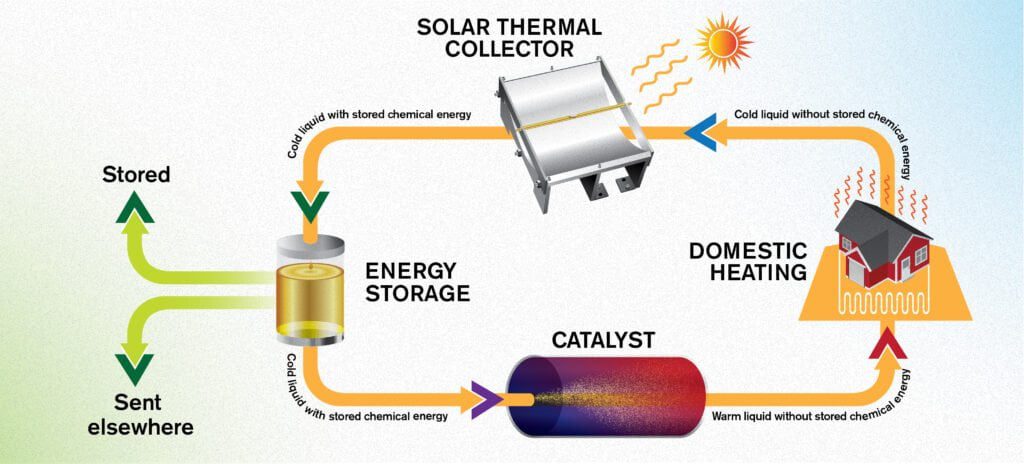Solar energy is considered by many to have the best chance of eliminating our dependence on fossil fuels. The problem remains the same, however: that of storing solar energy for long periods of time.
Problems that may have found a solution. A series of new studies have proposed a new approach to storing solar energy.
A “solar petrol”
A research team in Sweden has developed a specialized fluid, called “solar thermal fuel,” capable of storing energy captured from the sun for over a decade.
“Solar thermal fuel is like a rechargeable battery. Only instead of electricity, you plug in sunlight and get heat on demand,” explains Jeffrey Grossman, MIT engineer.
The fluid was developed for over a year by scientists from the Chalmers University of Technology in Gothenburg, Sweden.
The “energy” mixture is composed of carbon, hydrogen and nitrogen.
The liquid changes shape under sunlight
When sunlight comes into contact with the liquid, the bonds between its atoms are rearranged and it transforms into an isomer. A sort of “energized” version of himself. The sun's energy is held between the strong chemical bonds of isomers.
The molecule is capable of storing energy even when it cools down to room temperature.
To use the trapped energy, the liquid is passed through a catalyst which returns the molecule to its original shape, releasing energy in the form of heat.
How long is this isomer able to store energy?
“It can currently store energy for up to 18 years,” he says Kasper Moth-Poulsen, Professor at the Department of Chemistry and Chemical Engineering and first author of the research. “And when we get to extracting the energy and using it, we get a heat increase that is greater than we dared hope for.”
I recovered this interview with Poulsen (in English) which explains a few things about this molecule:
Potential applications go beyond home heating.
How does this system to store solar energy work?

The system works like a loop. It has a concave reflector with a tube in the center that tracks the position of the sun. The liquid is pumped through transparent tubes to be illuminated by the sunrays.
As it heats up, the liquid changes from its initial molecule shape norbornadiene to its isomer that can store energy, the quadricycle. The energy-filled liquid is then stored at room temperature.
When energy is needed, the fluid is pushed through a catalyst that converts the molecules to their original form, heating the liquid by 63 degrees Celsius.
This hot liquid can be used for application in anything from home heating systems, to powering a building's water heater, dishwasher, dryer, and much more.
The next steps
In late 2020, an EU project led by a team from Chalmers began developing prototypes of the technology for large-scale applications. The project received 4,3 million euros from the EU and will last 3 years.
Estimates say there will be a large-scale commercialization of a similar system for storing solar energy by the end of the decade.
Until now, researchers have subjected the fluid to this cycle more than 125 times without significant damage to the molecule. It is a direction to be followed carefully.


